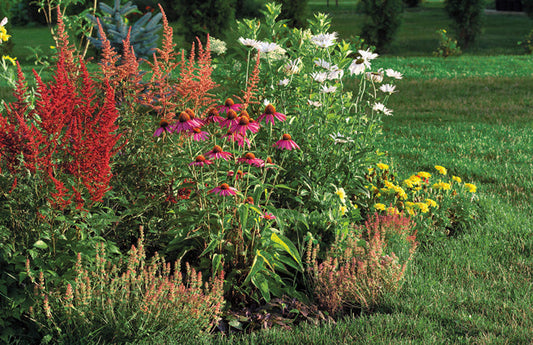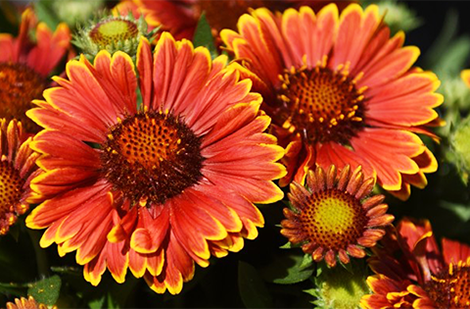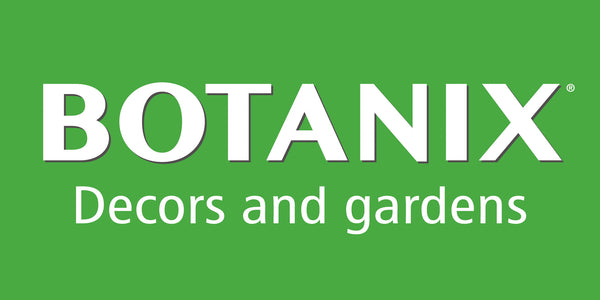Agastache 'Honeysticks Ember'
Agastache 'Honeysticks Ember'
Agastache 'Honeysticks Ember'
Exposure
- Sun
Rusticity
Bloom time
- July
- August
- September
- Bright orange-red flowers
- Spicy aromatic foliage
- Attracts hummingbirds and pollinators
- Tolerant to heat and drought
- Compact habit, long bloom
Discover the warm glow of Agastache 'Honeysticks Ember' (Agastache rupestris 'Honeysticks Ember'), a fantastic selection of the desert licorice mint, prized for its fragrant foliage and glowing orange-red tubular flowers reminiscent of embers in a campfire. This perennial attracts hummingbirds and pollinators with its nectar-rich flowers that bloom from mid-summer into early fall. Its compact habit and ease of care make it an ideal choice for adding a touch of vibrant colour and a spicy fragrance to your Quebec garden.
Characteristics
- Foliage : The foliage of Agastache 'Honeysticks Ember' is dark green with ovate leaves that have jagged and pointed edges along the stems. It is aromatic and emits a spicy fragrance.
- Bloom : This variety produces spikes of luminous orange-red tubular flowers, reminiscent of the colour of embers. The bloom is abundant and lasts from mid-summer to early fall.
- Light : Prefers full sun. Requires at least 6 hours of direct sunlight per day for optimal flowering.
- Habit : Its habit is upright and compact.
- Growth : Reaches a height of approximately 30 to 45 cm (12 to 18 inches) and a spread of 30 cm (12 inches).
- Humidity : Prefers well-drained soil and is drought-tolerant once established. Does not like heavy clay soils.
- Soil : Thrives in well-drained soil, even poor and lean soil. Overly rich soil can lead to excessive foliage growth at the expense of flowering.
- Temperature : Hardy in zones 4 through 9, which includes most regions of Quebec.
- Watering : Young plants need regular watering during their first growing season to establish themselves well. Once mature, watering can be greatly reduced.
Uses
- Types of Use : Ideal for sunny borders, flower beds, rock gardens, cottage gardens, containers, and mass plantings. Its flowers attract hummingbirds, bees, and butterflies, making it an excellent choice for pollinator gardens.
- Decorative Advantages : Its unique orange-red flowers and aromatic foliage add a touch of warm colour and a pleasant fragrance to the garden. Its compact habit also makes it attractive in pots. It is deer and rabbit resistant.
Care
- Fertilization : A single fertilization in the fall with a balanced fertilizer is sufficient.
- Pruning : Pinch young plants in the spring when they reach about 15 cm tall to encourage bushier growth. Deadhead spent flower spikes to prolong blooming. Leave the stems intact over the winter to encourage self-seeding and improve winter hardiness. Cut back old stems in the spring just above the new foliage.
- Planting :
- Distance : Plant at a distance of approximately 30 to 60 cm (12 to 24 inches) to allow for good air circulation.
- Depth : Plant at the same level as the top of the root ball in the original container.
- Period : Spring or early fall are the best times for planting.
Plant details
Dimensions
Dimensions
Characteristics
Characteristics
Habit:
- Upright
- Compact
Flowering colours:
- Orange
- Red
Plant needs
Plant needs
Watering:
Maintenance:
- Easy
Soil requirement:
Features
Features
Resistance:
- Deer
- Rabbit
- Drought
Attract:
- Hummingbirds
- Bees
Use:
- Border
- Flowerbed
- Rock garden
- Flower bed
- Pollinator garden
Attribute:
- Attractive to hummingbirds
- Attractive to bees
- Deer resistant
- Rabbit resistant
- Fragrant
- Long blooming

Related articles
-

Perennials for all occasions
Read the articleOsez créer des associations inédites qui sauront refléter votre personnalité, même si pour cela vous deviez déplacer certaines vivaces pour mieux les mettre en valeur.
-

Landscaping with perennials
Read the articleVariétés à découvrir, la tomate se savoure crue, en sandwich, en bruschetta ou en salade. Cuite, c'est l'ingrédient de base de sauces, soupes et salsas.
-

Perennials proper maintenance: cut and fertilize
Read the articleLa grande popularité des vivaces vient du fait qu'après avoir été oubliées pendant des mois au cours de l'hiver, elles réapparaissent sur la scène plus énergiques et surprenantes que par...
-

How to plant perennials in your garden
Read the articleEn pénétrant au jardin, ce sont souvent les plantes vivaces que l’on remarque en premier. Un massif de sauges, d’hémérocalles, d’astilbes, d’échinacées ou de lavande offre un spectacle d’une beauté...









